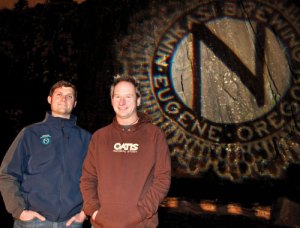For the last four years, I’ve grown, shrunk, laughed, cried, worked my butt off, relaxed on the couch, drank until I passed out, and thrown up- regretting it the entire next day. Yes, college was an emotional roller coaster that I wish every human being could experience.
As planned, I will be graduating form the University of Oregon this spring, to be more specific, on June 18, 2012, and that day is rapidly approaching. I chose this post to write a small but meaningful retrospective on my understanding at this point in time because now, after I went through it all, I am realizing the significance of it.
I started out a pre-business major. And as the ongoing joke of the journalism industry goes, I was horrible at math so I dropped it fast. I quickly turned to advertising and public relations as a way to express myself through writing and creating to communicate to everyone. I am now supposedly prepared for my professional life in PR or advertising and am working now in an internship to better my experience in the real world.
From the time I was little, I was involved in sports – volleyball, basketball, soccer, field hockey and lacrosse, my favorite out of the lot. Even through college where I played competitive women’s club lacrosse, I carried the values I learned through competition.
To me, the most valuable experiences happen outside of school and work. I found my best friends. Naria, Hillary, and Ursi. These women have literally stuck with me through the hardest year in my life since my mother passed away when I was eight years old. I will forever be in their gratitude and I know that I will know them the rest of my life.
I am excited to move on to the next chapter of my life., but will never forget what I learned while I was in college. Thank you to all of those (you know who you are) who have touched me forever.
E-Portfolio link: http://www.wix.com/oli031/olivianarvaez#!portfolio







![David and Victoria Beckham bedtime scene Armani Underwear Ad Photo Spring Summer 2009[3]](https://olivianarvaezadvertising.files.wordpress.com/2012/05/david-and-victoria-beckham-bedtime-scene-armani-underwear-ad-photo-spring-summer-20093.jpg?w=300&h=188)

